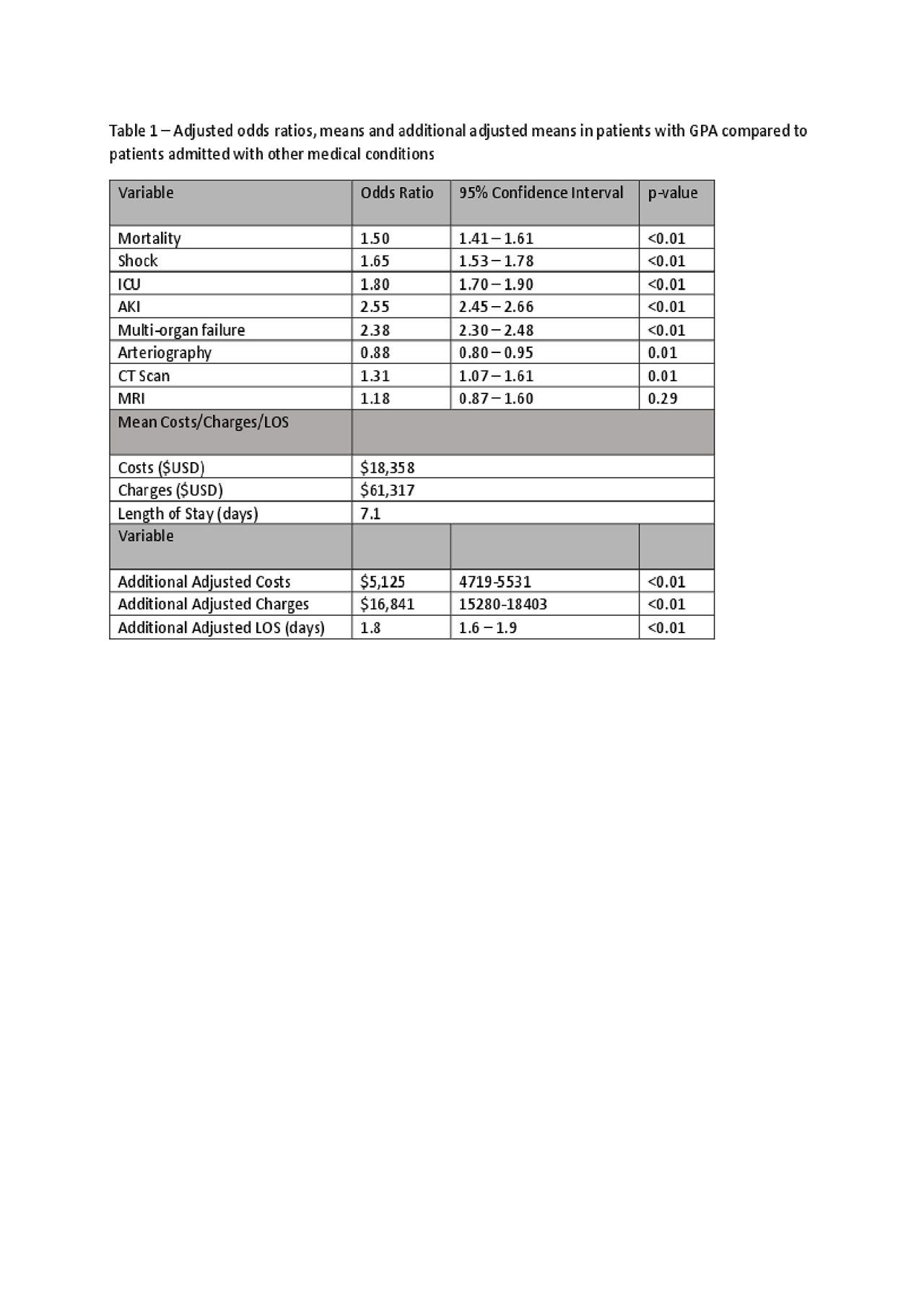Session Information
Session Type: Poster Session (Monday)
Session Time: 9:00AM-11:00AM
Background/Purpose: Granulomatosis with polyangiitis (GPA, formerly known and Wegener’s granulomatosis) is a major subtype of anti-neutrophil cytoplasmic antibody (ANCA)-associated vasculitis characterized by granulomatous inflammation of small- and medium- size vessels. Data on inpatient epidemiology, resource utilization, and healthcare expenditures of GPA are not well described. The aim of this study was to explore those characteristics using a large national inpatient database.
Methods: This retrospective cohort study used the data from the National Inpatient Sample (NIS), the largest public inpatient database in the US, in the year 2005-2014. Data for more than seven million individual hospitalization across all-payers from over 4,000 non-federal acute care hospitals across 40 states are recorded annually in the NIS database. All patients with ICD9-CM diagnostic codes for GPA were included. None were excluded. The primary outcome was determining the inpatient prevalence of GPA. Secondary outcomes included determining inpatient mortality, morbidity, resource utilization, hospital length of stay (LOS), and inflation-adjusted total hospital costs and charges. Multivariate regression analyses were used to adjust for age, gender, Charlson Comorbidity Index, income in patient zip code, hospital region, location, size and teaching status.
Results: A total of 124,682 admissions of patients with a diagnosis of GPA occurred in the study period. The mean age was 60.2 years and 52.3% were female. For the primary outcome, the inpatient prevalence of GPA was 32.6 cases per 100,000 discharges. The most common reasons for hospitalization were GPA itself (38.3%) followed by pneumonia (13.7%), sepsis (8.4%), acute kidney injury (8.3%), and acute respiratory failure (4.8%). Patients with GPA displayed significantly higher odds of inpatient all-cause mortality compared to patients admitted for all other causes. Patients with GPA displayed significantly higher morbidity odds of shock, ICU stay, AKI, and multiorgan failure when compared to patients admitted for all other reasons. Patients with GPA were also found to have increased odds of utilizing special investigations, including CT, MRI, and arteriography. Patients with associated diagnosis of GPA displayed higher hospital costs, charges and LOS compared to patients with no GPA (Table 1).
Conclusion: The inpatient prevalence of GPA was higher than what would be expected from the overall incidence. Hospitalizations of these patients were associated with high morbidity and mortality. The mean total hospital costs, charges, and LOS for patients admitted with GPA were higher than patients without GPA.
To cite this abstract in AMA style:
Ungprasert P, Koster M, Cheungpasitporn W, Wijarnpreecha K, Thongprayoon C, Kroner P. Inpatient Epidemiology of Granulomatosis with Polyangiitis in the United States [abstract]. Arthritis Rheumatol. 2019; 71 (suppl 10). https://acrabstracts.org/abstract/inpatient-epidemiology-of-granulomatosis-with-polyangiitis-in-the-united-states/. Accessed .« Back to 2019 ACR/ARP Annual Meeting
ACR Meeting Abstracts - https://acrabstracts.org/abstract/inpatient-epidemiology-of-granulomatosis-with-polyangiitis-in-the-united-states/

